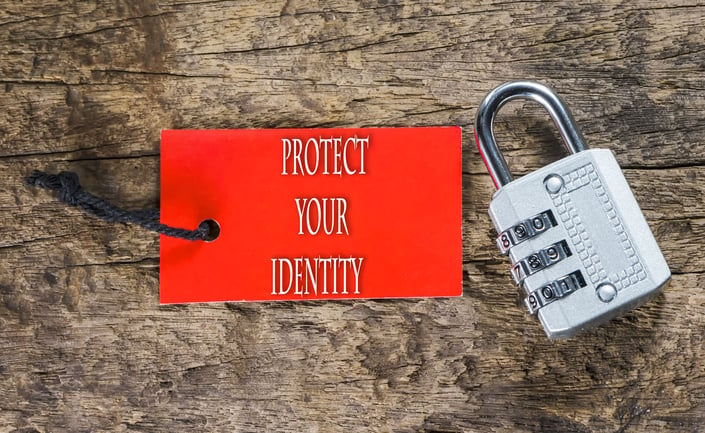A 2018 Identity Fraud Reporti produced by Javelin Strategy & Research, shows the number of identity theft victims increased to 16.7 million in the U.S. This is an 8% increase from the previous year. Despite industry efforts to prevent identity fraud, the study shows that identity thieves stole from 1.3 million more victims in 2018 and the amount stolen increased to $16.8 billion. The types of identity fraud continued to move online and away from physical stores due to embedded chip cards. It was reported that fraud is getting more complicated, meaning identity fraud criminals are opening more new accounts to compromise accounts consumers already have.

One of the easiest ways to protect yourself from identity theft is by simply placing a credit freeze with each of the major three credit bureaus. Unless you’re actively opening lines of credit, such as buying a home, purchasing a car, opening a credit card or making a large purchase that requires a credit check, there really isn’t any reason to leave your credit open. Freezing your credit means no one can gain access to your credit report or open a new credit account.
Since, lenders and other companies cannot view your credit, fraudsters cannot access your credit, even if they have access to your Social Security Number. However, the freeze will prevent you from gaining access to new loans, credit cards and mortgages until you unlock the credit at each of the three bureaus. Good news is that in May of 2018, Congress passed a bill making credit freezes free of chargeii.
If you don’t want to lock your credit, there are other solutions for monitoring your identity, most common is using an Identity Theft Protection Company.
Generally, most identity theft protection companies offer three main services: electronic monitoring of your personal information, alerts of your personal information use and resources for theft recovery. Many also offer additional services, such as alerts about identity theft news. You can expect to pay for each of these services and recommend researching the best options suited to your needs.
Here’s an overview of the three main services:
-
Electronic Monitoring: Identity theft protection companies electronically monitor your credit files with the three major credit bureaus and then alert you about any suspicious activity, such as new accounts opened in your name and new credit inquiries received. Many companies will also scan the internet for major data breaches and flag your account when you might be affected.
-
Alerts: Identity theft protection companies alert you of any instance where your personal information has been used, an example would include if someone tried to open a bank account in your name or use your social security number. These services may be beneficial because many people don’t realize identity theft has happened until it is too late, and their credit is impacted, their bank accounts compromised, or they suddenly have a lot of new debt in their name. The alerts allow you to react quickly to the questionable activity.
-
Recovery and Restoration: The answer is maybe. If you are the motivated type, you may be able to do most of the identity monitoring services yourself. You can monitor your credit for suspicious activity by using the Waterfall Method in requesting your credit reports. The Waterfall Method is simple. There are twelve months in a year and there are three credit bureaus, so doing some quick math you should check one credit report every four months. This way you can get the free credit reports throughout the year. However, this won’t guarantee you’ll catch the fraud when it happens. The Fair Credit Reporting Act grants you the right to a free copy of your credit report. There are three major credit bureaus: Experian, TransUnion, and Equifax.iii
Here's a sample schedule:
January – Experian
May – TransUnion
October – Equifax
Repeat every year! It doesn’t matter when you start…just start! You can get your free credit reportsiiii from each of the credit reporting agencies.
The one identity service capability you cannot do by yourself is the recovery service. This is where you will need help if your identity is stolen. Each identity theft protection company offers its own list of benefits of recovery and restoration services. You can think of the recovery services as an insurance policy, it may be nice to have just in case.

The Bottom Line About Identity Theft Protection Services
Most identity theft protection services offer similar levels of identity theft prevention and recovery processes, generally, the restoration and recovery insurance is subject to restrictions and limitations. One of the problems with any identity theft protection service is that there’s no way to know how well it works unless you find out that your identity is stolen, and you need to take advantage of the service’s restoration and recovery assistance and insurance.
So, do you really need an identity theft protection service provider? This is a tough question and one only you can decide. The question is can you afford to have you credit ruined because you were not proactive?
If you’re considering signing up for any identity theft protection service, please make sure you read the terms and conditions carefully before handing over your credit card number to see what you’re really getting for your money.
Best Bet?
Lock your credit at all three agencies, it’s relatively easy to lock and unlock as you need your credit available to purchase large items.
i https://www.javelinstrategy.com/coverage-area/2018-identy-fraud-fraud-enters-new-era-complexity
ii https://www.experian.com/blogs/ask-experian/credit-freezes-free-with-new-bill/
iii Experian and the Experian marks are trademarks or registered trademarks of Experian Information Solutions, Inc. The “tu” logo, TransUnion, and Transunion trademarks, service marks, and logos are registered trademarks of TransUnion, LLC. Equifax® is a registered trademark. All rights reserved. Any reference obtained from this blog to a specific product, process, or service does not constitute or imply an endorsement by Big Picture Loans of the product, process, or service, or its producer or provider.
iiii https://www.annualcreditreport.com/index.action







.png?width=144&height=134&name=2019_PCI_Logo_Footer_10_16_19%20(002).png)
